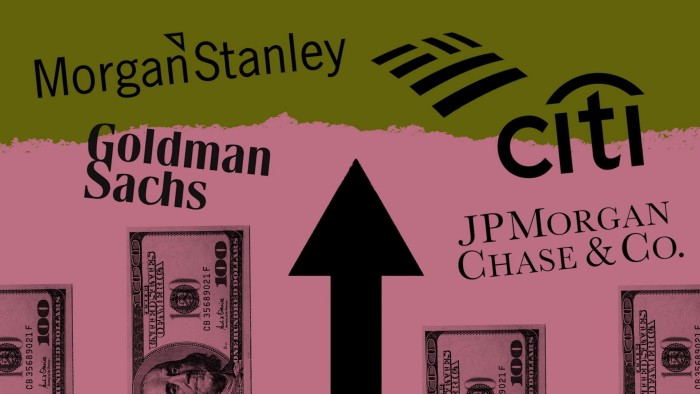Stay informed with free updates
Simply sign up to the Investment Banking myFT Digest — delivered directly to your inbox.
Banks are on course to generate their highest annual trading revenues since 2010, as equity derivatives and credit deals help power the business.
The industry is expected to bring in almost $225bn in trading revenues in 2024, according to estimates of performance from more than 250 banks by Coalition Greenwich, an industry research group.
The figure would narrowly surpass the blockbuster $224bn earned in 2022 when Russia’s full-scale invasion of Ukraine rocked financial markets, and mark the best year for banks’ traders since 2010 when they generated $226bn.
Volatility ahead of the US election and around the unwinding of the so-called yen carry trade helped propel trading revenues higher than Wall Street analysts and investors had anticipated.
But banks also reaped big revenue gains in securitisation trading, stimulated by the highest level of issuance since 2007, while a rebound in equity capital markets activity supported equity derivatives trading.
“Markets revenue collectively for the banks has been stronger than what we were forecasting at the beginning of [2024],” said Mollie Devine of Coalition Greenwich.
“Following the high-water mark of 2022 . . . ending up in a similar place [to that year] is considered a positive result for the banks and better than expected.”

The latest figures show how the business of Wall Street trading has rebounded after a fallow five years between 2014 and 2019, even as they have faced increasing competition from specialist electronic trading firms such as Citadel Securities and Jane Street.
The five biggest investment banks are on course to generate $112bn in trading revenues for 2024, according to estimates collated by Bloomberg, again eclipsing 2022.
Analysts forecast that full-year revenues for fixed income and equities trading at JPMorgan Chase, Goldman Sachs, Morgan Stanley, Bank of America and Citigroup will increase by 6.1 per cent from 2023.
Of the five large US investment banks, only BofA is expected to earn comfortably more from trading in 2024 than in 2022 and 2023 — though it has the smallest overall total. Jim DeMare, who runs the business for BofA, is viewed as a leading candidate to potentially succeed longtime chief executive Brian Moynihan.

The end of the past decade was marked by low volatility in markets, rock-bottom interest rates, and higher regulatory and technology costs. Banks benefit when prices bounce around rather than move steadily in one direction.
Trading activity was spurred by the Covid-19 pandemic, which marked a return to extreme bouts of market volatility, and geopolitical events such as Ukraine, as well as rising interest rates.
Large banks have also benefited from rivals retrenching from the trading business — including Deutsche Bank’s exit from equities trading and the demise of Credit Suisse — which has allowed those still standing to capture more business.
“The top four or five [banks] have greater market shares today than 10 years ago,” said Gerard Cassidy, banking analyst at RBC.
Banks have focused on financing activity of prime brokerage in equities and lending to private investment firms in fixed-income, valued by shareholders as more predictable businesses.
Unlike in 2022, when trading revenues were driven by movements in commodities and macro trading, equity derivatives, credit and securitisation were the hotspots in 2024.

Investors have typically shied away from ascribing a high valuation multiple to trading activities because of its lack of predictability.
“In 2019 we were having discussions with some clients about shrinking or exiting low-returning businesses like commodities and cash equities. The dialogue has changed,” said Coalition’s Devine.
“Our clients are not expecting a step down any time soon to the pre-Covid markets revenue levels.”
https://www.ft.com/content/b2870701-aba1-4782-8aea-375170f2a062


